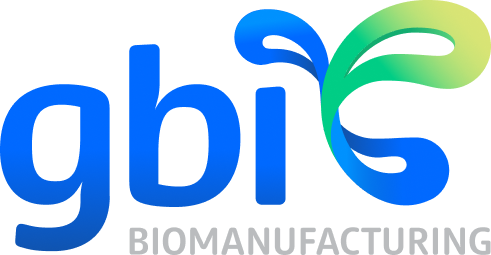Table of Contents
Pharma Almanac, December 2024, PAO-11-24-CL-09
The bioconjugation process for the production of a monoclonal antibody (mAb)- chelator for radiotherapy or diagnostics involves the conjugation of the mAb to a chelator to generate a conjugate. The legacy mAb-chelator conjugation process has generated batch-to-batch inconsistencies with respect to the monomeric purity and potency of the final GMP conjugate. High levels of aggregated species have been observed in multiple batches. The legacy process exposes the antibody to conditions that may lead to aggregation. Especially, the transchelation conditions include titration to low pH and incubation at elevated temperature. The first objective was to evaluate process improvements that may lead to a more robust process that can generate consistently high-quality conjugates with high potency and monomeric purity. After identifying the conditions, the improved conditions were applied at scale-up quantity to generate conjugate using the EasyMax system to automate and further determine the conjugation and transchelation process. The potency and monomeric purity of the conjugate generated by the improved process were compared to those of the legacy process-produced conjugate. Lastly, the stability of the mAb-chelator conjugates GMP-manufactured using both legacy and new processes has been evaluated.
EXPERIMENTAL DESIGN AND RESULTS
1) Evaluation of Transchelation Process Conditions
Experimental Design: To identify the feasibility of using other chelators for the transchelation step, the conjugation reaction mixture was split into three equal amounts (~11 mg/each) after completion of conjugation. One vessel utilized the transchelation conditions of the legacy process (EDTA, low pH, and high temperature). A second vessel was evaluated by performing the transchelation using DFOM (Desferoxamine mesylate) at ambient temperature and neutral pH. A third vessel was assessed by performing the transchelation using HBED (N,N’-Di(2-hydroxybenzyl)ethylenediamine-N,N’-diacetic acid monohydrochloride) at ambient temperature and neutral pH.
Results:
- HPLC data showed that the % monomer of the final conjugate produced using three different chelators was similar to each other: EDTA (98.2%); DFOM (98.5%); HBED (98.6%).
- A high radiochemical purity of 95.3% was obtained using DFOM as the transchelant under neutral pH transchelating conditions. Lower radiochemical purity was observed when HBED was used for transchelation (90% and 64%).
2) Comparison of the Legacy and New Transchelation Process
Experimental Design: Based on radiochemical purity, DFOM was investigated further at a 1.0 g scale using the automated EasyMax system (Figure 1). Also, the legacy conjugation and transchelation process was evaluated using the EasyMax system where all temperatures and pH were adjusted automatically.
Figure 1. EasyMax 402 Advanced Synthesis Workstation
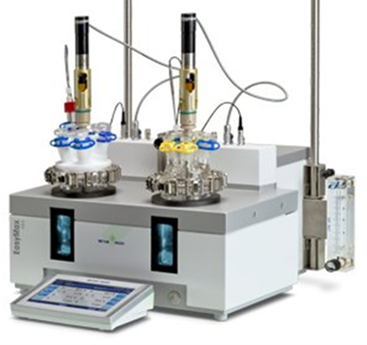
Results:
- HPLC analysis of the legacy process samples showed that HMW aggregate formation occurred during the low pH titration and continued to increase through transchelation and up to the final neutralization (Table 1). In contrast, trace amounts of HMW aggregate (< 0.02 %) were detected in in-process samples and BDS generated using DFOM at ambient temperature and neutral pH (Table 1).
- BDS produced by both transchelation processes has similar properties (Table 2).
Table 1. SEC-HPLC results (1.0-g scale)

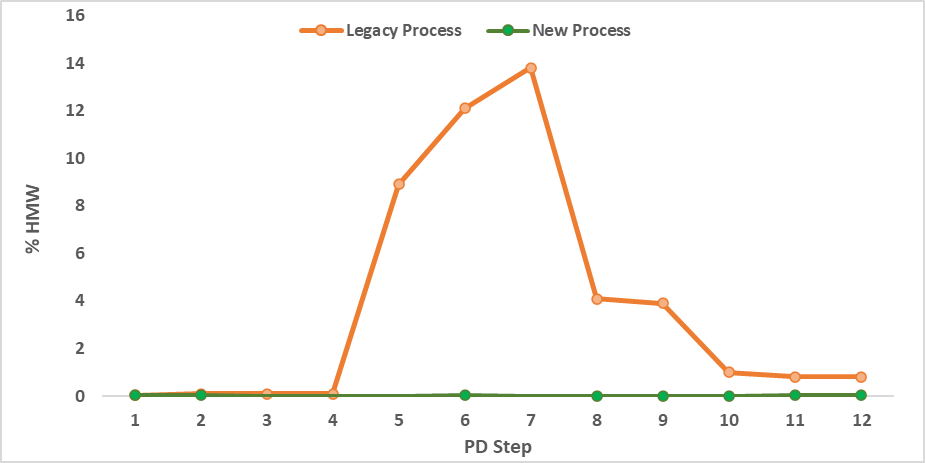
Table 2. Potency and radiochemical purity of BDS produced by two processes

3) Comparisons of GMP-Manufactured BDS Using the Legacy or New Process
Experimental Design: BDS was manufactured via GMP-conjugation process using EDTA or DFOM as a transchelating agent.
Results: Comparisons of yield, potency, and purity of GMP-manufactured BDS using legacy and new processes were summarized in Table 3, indicating that the quality of GMP-manufactured BDS by the new process was better than that of BDS manufactured using the legacy process.
Table 3. Yield, purity, and potency of GMP-manufactured BDS using legacy and new processes

4) Stability of GMP-Manufactured BDS Using the Legacy or New Process
Experimental Design: GMP-manufactured BDS using legacy and new processes were vialed and stored at 2–8 °C. The vialed samples were tested at the indicated periods (Table 4).
Results: Table 4 showed that BDS produced using EDTA or DFOM as a transchelating agent has maintained its purity and potency for 18 months at 2–8 °C.
Table 4. Stability of vialed BDS stored at 2–8 °C
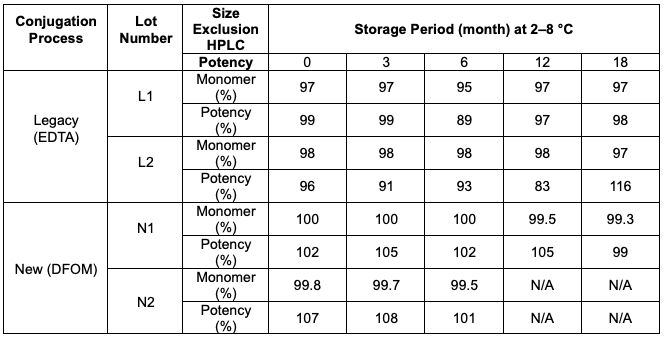
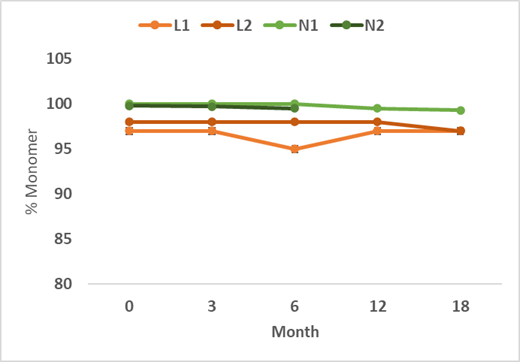
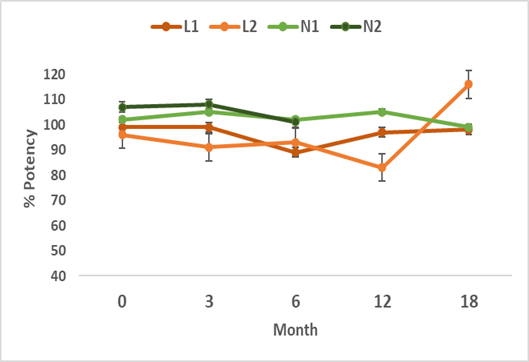
Conclusion
- In-process samples generated from the legacy process conditions revealed that the formation of HMW aggregate (>8.9%) occurred during the low pH titration and high temperature and continued to increase through transchelation and up to the final neutralization (>13.8% of HMW, see Table 1). Although most aggregates were removed by filters, the purity of the BDS remained below 99% (97.8%). In contrast, Table 1 showed that the purity of in-process samples and BDS maintained >99.5% monomeric purity throughout the entire process under the new conjugation process conditions.
- The GMP-manufactured BDS using the new process has improved properties over the legacy process-manufactured BDS (Table 3).
- Both GMP-manufactured BDS were stable for at least 18 months at 2–8 °C (Table 4).
- Overall, the application and maintenance of neutral pH conditions throughout the process and usage of the alternative transchelating agent (DFOM) improved process yield/robustness/reduced process risk, and the quality of the final conjugation product.
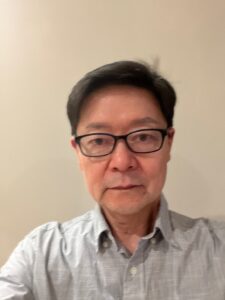
Dr. Lee is Senior Scientist of MSAT-Bioconjugation at GBI. He has more than 20 years of industrial experience in bioconjugation and protein purification. Dr. Lee specializes in research and process development of antibody-drug conjugates (ADCs) and other bioconjugate therapeutics including opioid vaccine conjugates.
